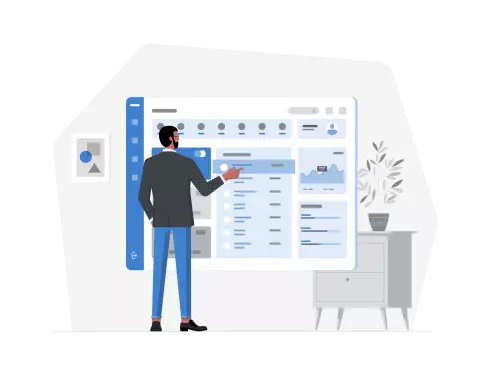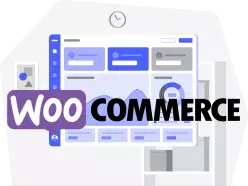24 Tips to Increase Your Magento Conversion Rate
The Conversion Rate is certainly one of the most important KPIs for store managers and the marketing department. Why? It’s simple: if the traffic remains the same, the revenue can be increased! Here you will get to know 24 tips to increase your Magento conversion rate.
First of all, the conversion rate itself.
What is a Conversion Rate and why should it be as high as possible?
It’s simple:
With a conversion rate of 1% and 100 visitors via Adwords, you generate an order.
If, on the other hand, your conversion rate is 5%, you will generate five orders for the same advertising spend for 100 visitors.
You can now imagine how the conversion rate will affect all your efforts towards more traffic.
Methods to Directly Improve Your Conversion Rate in Magento Store
Magento basically behaves the same way as other stores (such as Increase WooCommerce Conversion Rate). It’s mostly about improving the user experience. What can you offer so that your visitors are fascinated by your store? If that’s the case, your visitors will be happy to come back, buy from you again, and recommend your store to others.
It is important that you know what your visitors want and offer appropriate content. Guides, videos, technical details, calculators, configurators, etc.
Magento offers several options and configuration possibilities to optimize conversion rates. You can divide your store and the optimization measures into several groups.
Payment Process
Magento Conversion Rate Increase – Shopping Cart and Payment Page
When you start with CRO, the first thing you look at is your checkout process. This is the page that all your customers have to go through.

Regardless of the product, category, or target group, everyone has to go through the checkout and payment process.
Bastian Hammer
There are various methods with which you can optimize the ordering process. Below is just a small selection:
1. Order without Registration
Not all visitors want to register in your store. Most of them simply want to order the selected product. This should be as simple and smooth as possible.
Make sure that the ordering process in your store does not require registration (unless that is a requirement for your brand).

You can find this setting under: Stores – Configuration – Sales – Checkout
There are some stores (such as B2B only or closed shopping communities) where registration is mandatory. Try to go through the process yourself and evaluate the user experience. Are only necessary fields displayed? Does a verification email arrive promptly?
2. Coupon Code / Voucher Code field is easily visible
Especially if you work coupon code and drive campaigns with it, it is important that the coupon code input is simple.

Some time ago I found a coupon code for a store and also the product I was looking for. Unfortunately, I could not find the field for entering the coupon code. In such cases, the question is how important the product is. The nearest store is only a Google click away. Is it worthwhile to write or call the store now? Should I order directly and add my coupon code as an order comment? Simply cancel is just that: simple.
PS: Test your coupon codes thoroughly. This way you make sure that the configured rules fit.

You can find this setting under: Marketing – Shopping Cart Price Rules
3. Visualize Urgency and Scarcity
Only three products left in stock? Offer valid for a limited time only? Other visitors have just bought the same product?

Try to visualize such details. Not only on the product page but also in the shopping cart. As soon as your store visitors have the desired products in their shopping cart and are ready to pay, you should make this goal as urgent as possible.
PS: An extra tip for you. Magento is certainly not your only sales channel. Your shipping software or ERP may be able to sync quantities in Magento. See if there is a configuration to adjust the quantities.
Product Pages
Conversion Rate Optimization for Magento Stores – Product Pages
Make sure that you optimize your product pages. This is not only important for your visitors who want to view details about the products in your store. Google also rewards product pages that are user-friendly with good positioning in the search results. Especially when potential customers search for specific product names, your product pages should be at the top.
Optimize for people, Google always emphasizes the subject of search engine optimization. It’s best to stick to it and keep SEO in mind when doing so.
1. Product Description
In many stores, the product description is simply an inserted text without any special formatting. Here, of course, the user experience is not particularly good.
Much better are paragraphs, subheadings, bulleted lists, lists, etc.
It is also possible, especially with more complex products, to illustrate details with graphics in the product description itself.

Tell stories when it fits. Stories help your store visitors remember what you’ve told them. A special selection process of your suppliers? Experiences of existing customers with your products? Wrap it up in stories and improve your conversion rate.
2. Optimize Product Images
Actually, it goes without saying. Images must trigger positive feelings in order to sell. The product images are the elements on your product page that your store visitors notice first. Convince them to stay on your product page and read on.
If it fits your industry (and, it usually does), work with people in product images.
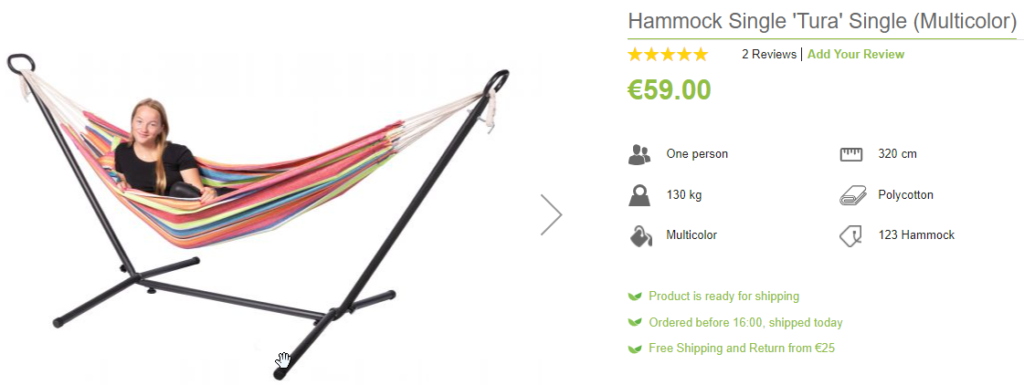
A hammock sells better with someone lying in it and relaxing. Wooden dowels sell better with a craftsman just assembling a shelf with them.
3. Image Gallery on Smartphone
How does the image gallery work on smartphones? Depending on the industry, well over 50% of the traffic in your store comes from mobile devices. Especially with the product gallery, it may be that the implementation in your theme is not optimal. Test the image gallery best from several cell phones and check if there are problems with any. Even difficulties in using it can lead to lower conversion rates.
Category Pages
Conversion Rate Optimization for Magento Stores – Category Pages
Category pages are extremely important for your store visitors. Besides optimizing your Category Pages for SEO, optimize them for user experience. Offer filters to search easily and efficiently. Do the sorting functions make sense? Do you have consistent images and product descriptions?
1. Uniform Images / Preview Sizes
Try to make sure that all images in a category are in portrait format or panorama format. If you switch frequently and display different formats in one row, it will look choppy.
The same applies to the product titles. If some are only two to three words short and others contain up to ten words, these long ones can wrap to the next line. If the length of the product titles can’t be unified, make sure your theme catches that and all the “product boxes” are the same height.
Especially with themes that you develop yourself with your team, this can easily be overlooked.
2. Use Filter Navigation
Magento allows you to add product attributes (e.g. size, color, weight). If you create these attributes as a “dropdown”, for example, you can set them to be displayed in the filter navigation.

You can find this setting under: Stores – (Attributes) Product – Add New Attribute – Storefront Properties
The filters are on the left side of the vast majority of stores. Try to offer your filters on the left side as well. This is the place where most visitors expect to find filters. Meet the expectations of your visitors. This way they don’t have to get used to it.
Think through the order of the filters. It makes the most sense to start from the top-down, from coarse to fine. What makes the most sense? How do most visitors refine product criteria?
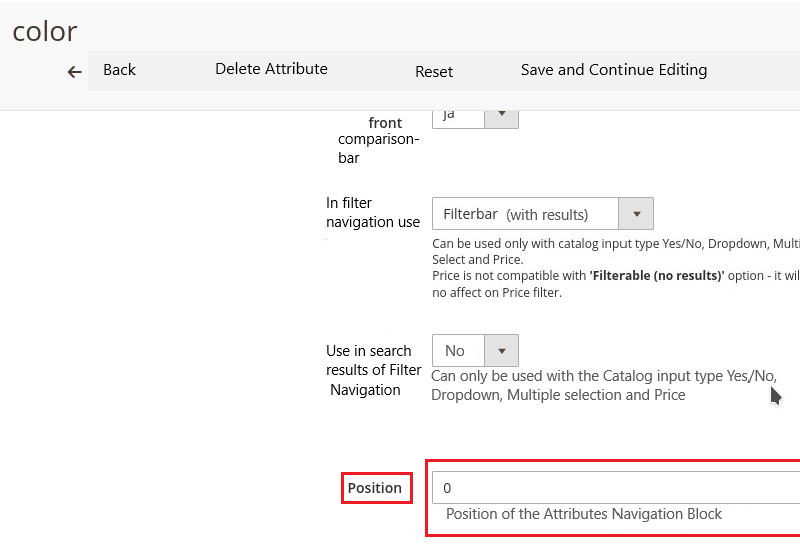
For technical products, in particular, stores offer a wide range of filter options, for example, by brand, by performance characteristics, etc.
In addition to dropdowns, there is also the option of using checkboxes in the filters. In the food area, for example, this is “sugar-free”, “gluten-free”, etc.
Caution is advised with products that have no values set. In the dropdowns, for example, these products are then not displayed at all.
Also, decide if you want to display the number of products. It can help set expectations. If I click through filter navigation and suddenly see 0 products, it’s confusing. Magento usually hides filters that are no longer available or are exclusive to each other (sugar-free + sugar).
3. Best Seller on Top
You have the possibility with Magento to set a product position in the respective category. Make sure that the bestsellers are right at the top. So they are easy to find for visitors who click through your categories.
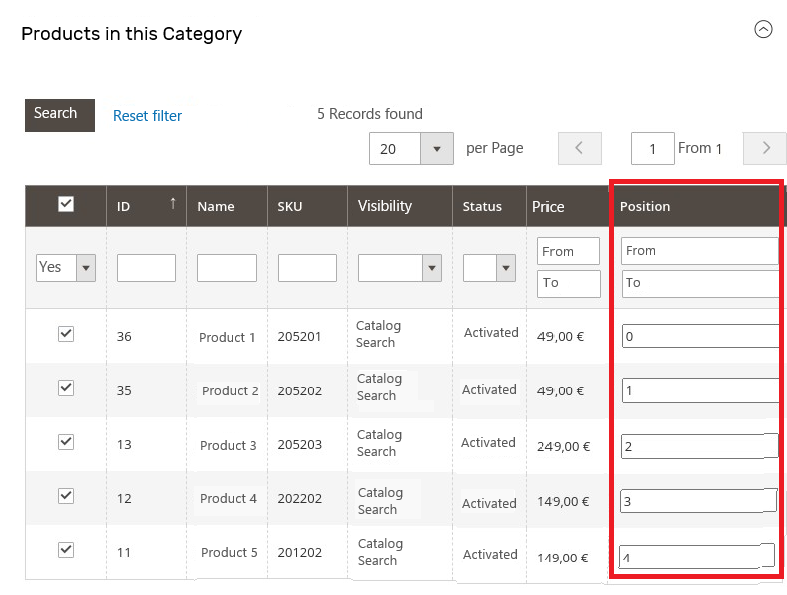
You can find this setting under: Catalog – Categories – (select a category) – Products in this category
You can also determine here which products should logically follow each other. Especially if you want to sell in-category accessories to a product and the product itself, you can easily determine the positions.
4. Reduce the Number of Pages per Category
How many times have you clicked on “next page”? Do you also find it cumbersome over and over again?
I feel this way more often. Every store works a little differently and implements pagination differently. Some are downright, others down left. Some with arrows, others with page numbers, etc.
Your visitors are actually happier without clicking further. Of course, if you have many products in one category, you can’t avoid multiple pages. However, you can increase the number of products per page. Thus, you reduce the number of pages per category at the same time.
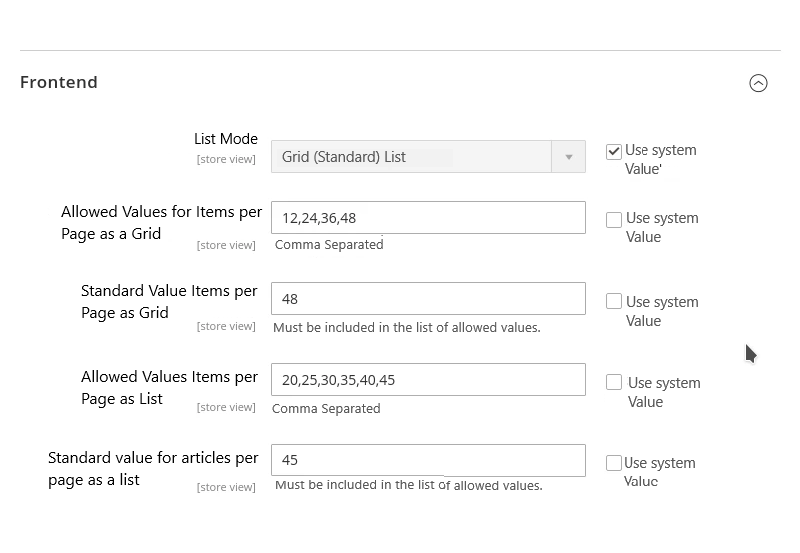
You can find this setting under: Stores – Configuration – Catalog – Frontend
You are doing your visitors a favor and can directly increase your Magento conversion rate.
Contents
Conversion Rate Optimization for Magento Stores – Content
Besides the products in your store, you usually have content.
Standard is something like the imprint, terms and conditions, and “about us” pages. Fascinate these are of course only in the fewest cases (have you ever recommended friends to read an AGB because they were so interesting?).
So what would you recommend to your friends and acquaintances?
There are several options now. You can simply create content pages with Magento. In principle, this is then similar to other CMS such as WordPress or Drupal also.
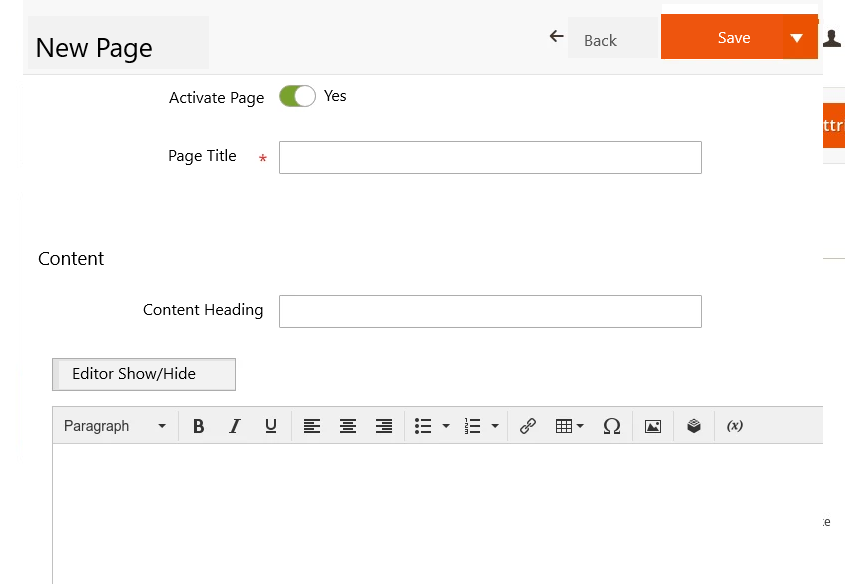
You can find this setting under: Content – Pages – Add new page
You simply create a page with title, headings, subheadings and the content you want to insert.
FAQs
Frequently Asked Questions (FAQs) are a list of questions and answers. These can be organized into groups (e.g. quality, shipping, returns, etc.).
Make sure you hit the “tone” of your brand and customers here.
Especially with FAQs (and other long lists), it’s possible and exceptional to get a little creative and deviate from the norm.
Guidebook
Guidebooks are quite easy to create. Since you and your team are the experts around your products, it should be easy for you to write a guide.
To do this, use all the content you have generated over the life of your business. Think about what could be helpful and browse for it:
- E-Mails
- Reviews
- Conversations with Customers / Acquaintances
- Forenbeiträge
- Questions / Discussions on Social Media
- Videos
Based on this content, create a structure for specific guides that help your customers make informed decisions.
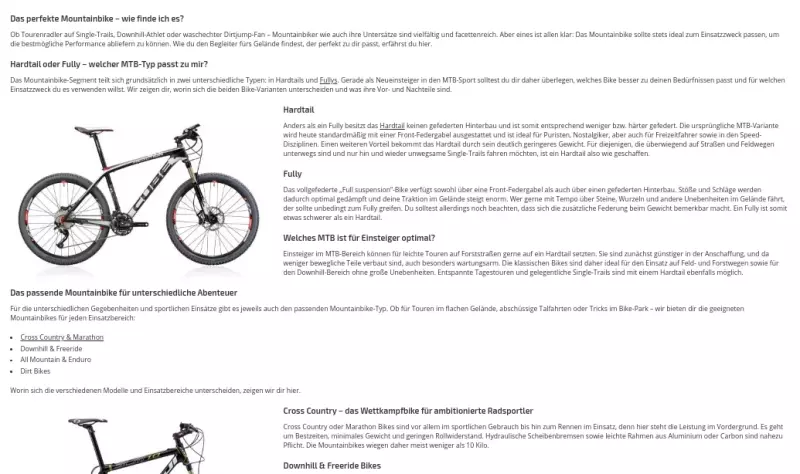
Make sure that you give advice in guidebooks. Especially if the decision might be against buying your products and your content also shows disadvantages, you have a potentially good advisor.
The better this guide is, the more likely visitors might be to recommend it.
Technical Details, Tests, Unboxing
Do you sell products in your store that are a bit more complex?
Mower motor, e-mountain bikes, smartphones, programmable children’s toys are just a few examples around which you can produce a lot of content.
Technical details are interesting for many who like to compare products and weigh options carefully.
Comparisons work very well here, where you compare two or more products.
Tests are very helpful in getting an idea of what potential customers can expect from your products.
A good example of this is outdoor products. If you can already read a detailed test report of the selected tent before you order, that is of course good.
If the tent has even gone through a 2-week test in Scandinavia, that fits even better if your customer is just researching an outdoor tour in Scandinavia.
Unboxing videos work very well on YouTube.
There are various channels that specialize in unboxing products. Here, prospective buyers can understand the experience that awaits them after the purchase.

Calculators and Configurators
Whenever products have options, and especially when those products involve a subscription, calculators come in handy.
A good example is the cloud services, for example from Amazon, Azure, Cloudways, etc.
Even in the area of vehicles and other products that you can put together yourself, computers are useful.
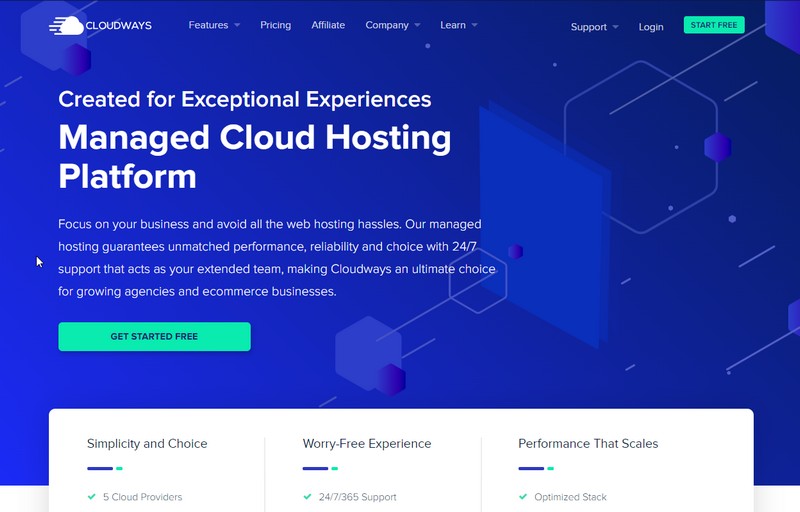
Calculators are mostly developed in JavaScript, so they provide results directly. Not so common anymore are forms that you fill out, which are then calculated by a script on the server after you submit them and only then display the results.
There are plug-ins for some store systems that can be installed and offer a calculator or configurator on a product basis.
These are often found in B2B stores where customers can configure products. These are then individually produced or customized. One example of this is advertising material.
Other content that makes stores more “linkable
In SEO, one speaks of “linkable assets”. This means content or information that is so well prepared that other people like to link to it.
Recipes are ideal for stores in the food sector. The ideal thing about these is that you can suggest and link your own products in the ingredients.
In the fashion sector, these can be large picture galleries and reports from fashion shows, etc.
Videos are certainly very suitable for children’s toys.
Get creative here. Research possible topics around your keywords. Also look at what topics there are books on in this area. Another tip on how to generate more ideas is to use your own data. Take a look at your store and see what your visitors have been searching for.
All of this helps you generate ideas for your linkable assets.
Extensions
Conversion Rate Optimization for Magento Stores via Extensions / Extenders
Unlike WooCommerce, Magento doesn’t require as many plug-ins to achieve a similar feature set. Magento already offers more functionalities on the smallest scale than WooCommerce, for example. Nevertheless, it may be necessary to install plug-ins or “extensions” depending on the requirements.
Of course, which extensions increase your conversion rate depends on your target customers and your industry. In general, an improved user experience contributes to an increased conversion rate.
Especially with Magento, there are some extensions that help with this.
Order and Payment Process
The order and payment process are extremely important in CRO. This is because all visitors have to go through this page to place an order. Therefore, put special emphasis on optimization.
Depending on what fits your business model, you can offer other options such as shipping as a gift and a flexible delivery date.
Alternatively, it may be necessary to reduce options and fields.
Magento may not support all your requirements in the ordering process. For this, you can resort to extensions.
Smart One Step Checkout for Magento 2
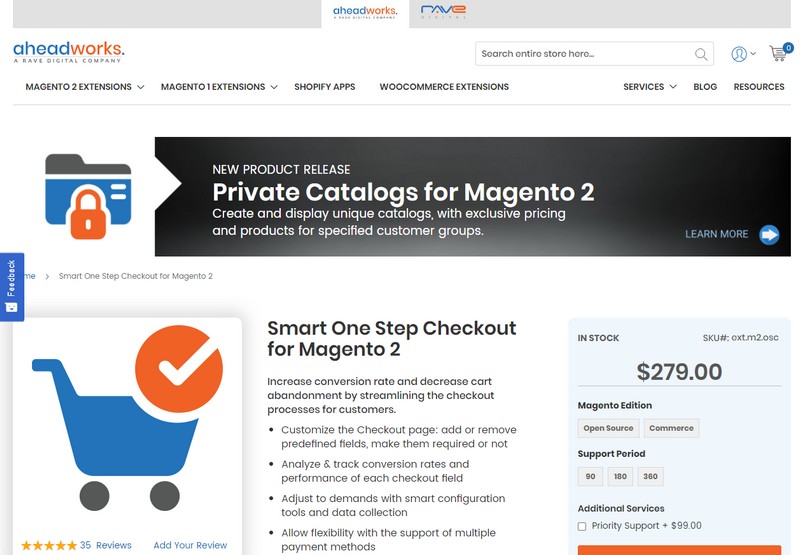
With this extension you can add and remove fields.
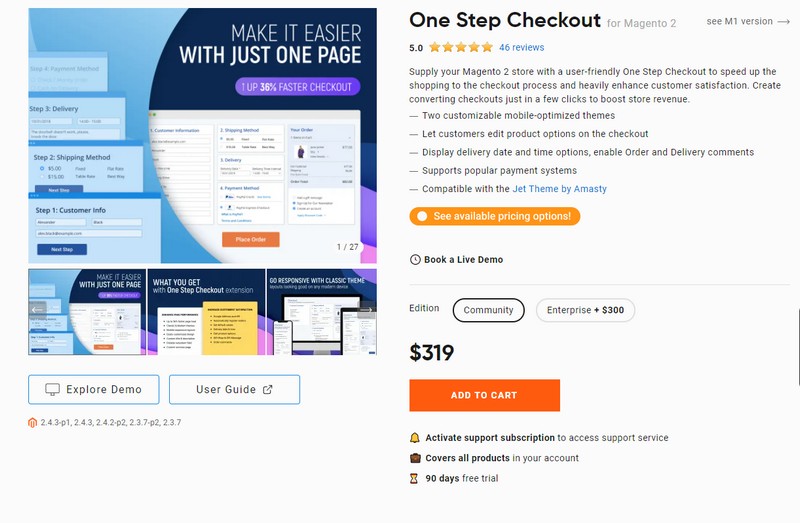
You get more functions and options for the ordering process via this plug-in.
The customization of the design is possible, as well as the insertion of content.
Category Pages
Category pages are important entry pages for visitors who first want to see your product range and only then decide on a product. So make sure that the offer, product range, and user experience (UX) are right!
With the following extensions, you can improve the functions in your store even more.
Magento 2 Improved Sorting
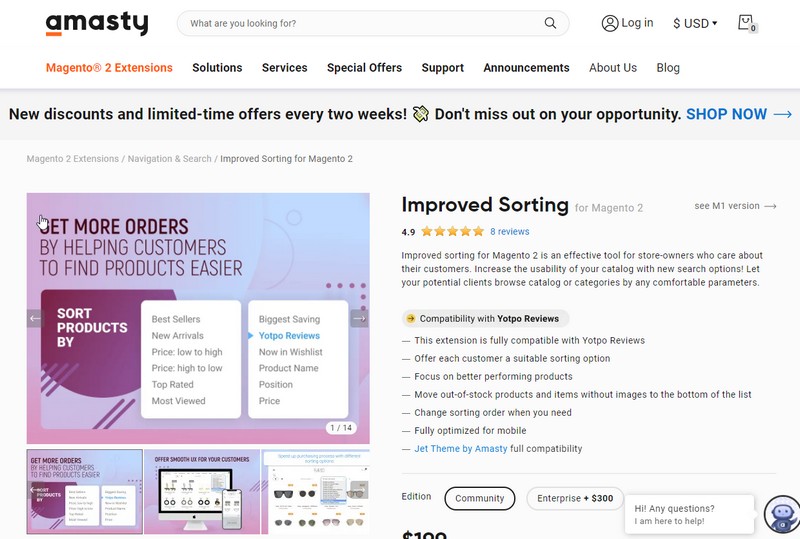
Sometimes the sorting features that Magento comes with are just not enough. Maybe your visitors want to sort by discounts. Or by the number of reviews. If you use wish lists, products can also be sorted by frequency in wish lists.
Product Labels for Magento 2
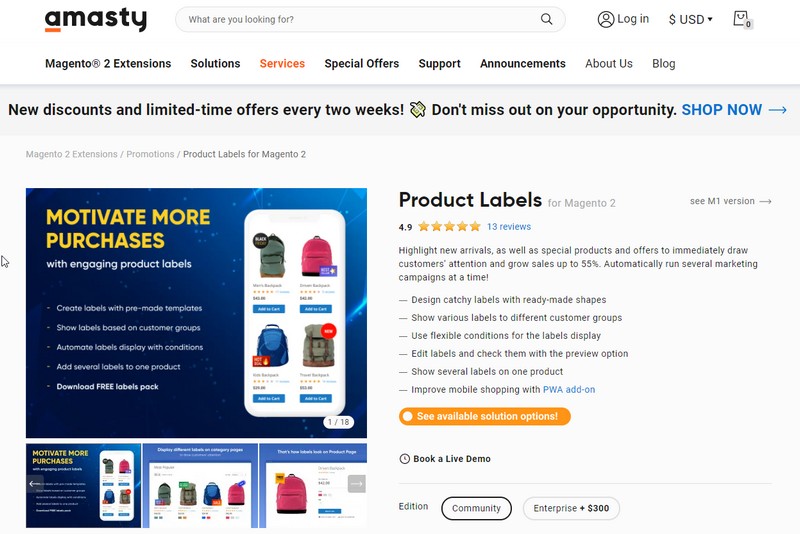
A great way to get creative in marketing is to use product labels. Magento and many themes bring the possibility for standard product labels (New, Discount). But sometimes these labels are not enough.
Tools
Tools that Increase Your Magento Conversion Rate
In this case, the same applies to Magento as to other stores. Measure data, run A/B tests, measure success, and start again. This will get you into an “optimization cycle”.
The tools that help you with this include analytics software such as Google Analytics, Matomo, Hotjar, Marketing Automation, etc.
Before we take a closer look at the tools, I want to mention one important point first.
Most tools help, of course. Often with specific areas and issues. What doesn’t exist is a software that you turn on and the software automatically starts optimizing your store for conversions to increase your Magento conversion rate.

In most cases, CRO is a tedious task with many adjusting screws where details have to be considered. Don’t let any software marketing department suggest otherwise. Check what exactly you are paying for and what you can do with the results.
And that brings us to the crux of the matter: “what you can do with the results”. Many methods are easy to implement. Sometimes it’s design changes, sometimes it’s content that needs to be improved.
To be sure what is working well for you and, more importantly, your visitors, you should measure your actions.
To be sure what is working well for you and, more importantly, your visitors, you should measure your actions.
As soon as you have at least 100 visitors per day in your store, optimizations become interesting. In these cases, you can easily make a change on the morning of the first day. For 24 hours you now note the conversion rate. In the morning of the next day, you make another change. After 24 hours, write down the conversion rate again and compare them.
With 100 visitors per day, you will naturally have fluctuations in orders per day (sometimes 0 sometimes 10). The more visitors you have in your store, the more meaningful your measurements will be.
To be on the safe side, you can also make weekly changes and measurements during a few visits.
You can easily save the results in Excel and thus have a good comparison.
To go into more detail on specific areas, now for the tools.
Web Analytics to Increase Your Magento Conversion Rate
There are plenty of them. They are usually integrated via JavaScript and/or tracking pixels. The job of the web analytics software is to record visitors and their behavior. Depending on the functionality of your web analytics software, you can then make evaluations that answer your questions.
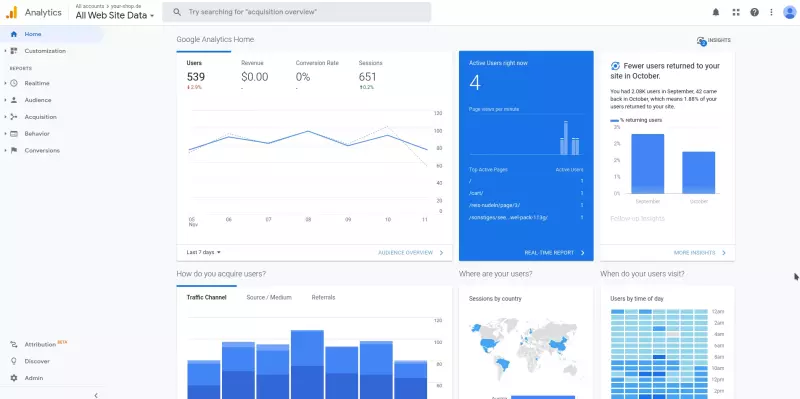
- How many visitors were in category X this month compared to last month?
- What are the most searched keywords in my store?
- How does the bounce rate differ between mobile and desktop traffic?
You will get answers to these and other questions. The most common tools for this are Google Analytics, TrackJs, Matomo, etc.
Google Analytics has the advantage that it also integrates with other Google products such as Google Adwords, Google Search Console, etc..
This gives you a deeper insight into your traffic, i.e. your visitor behavior.
Matomo Analytics you can install on your own server. Thus, you do not store any data with third-party providers. This simplifies your privacy and cookie situation.
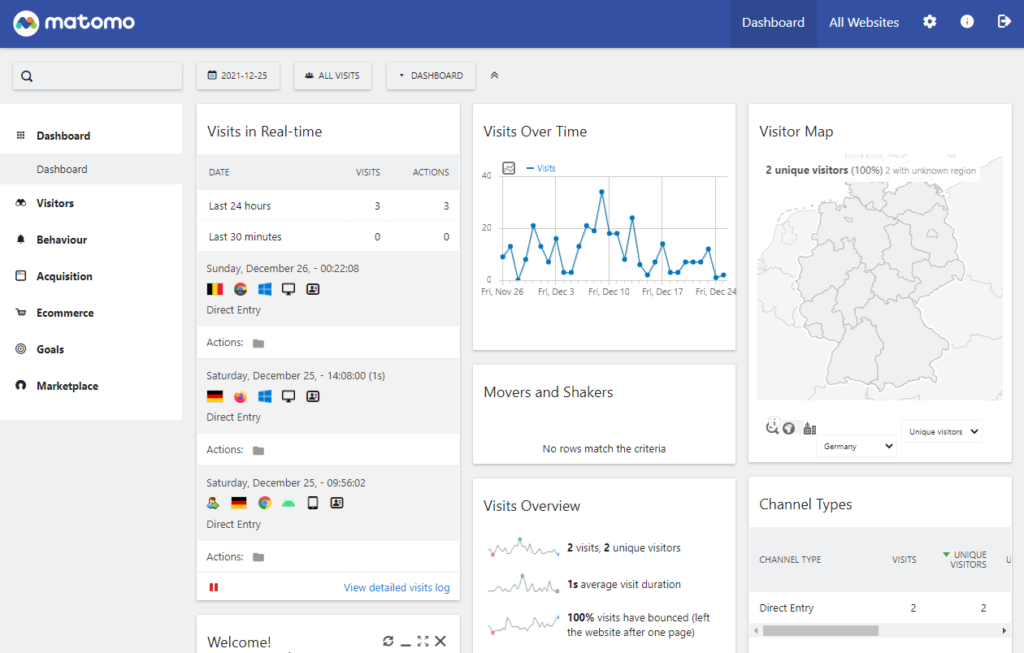
Feedback and Session Recording
To increase your Magento conversion rate, it is important to know at which points your visitors have problems and drop out of processes. To find this out, you can of course talk to your customers on the phone and try to work out details this way.
There is also software for exactly this purpose. Hotjar can ask for feedback on specific pages. This way you can see if a specific page gets lower feedback than the rest on average. If this is the case, it is sometimes even possible to just look at the page and estimate for yourself where the problem is.
Hotjar and rrweb also offer the possibility to record sessions. After a visitor has left your store, the behavior and mouse movements are recorded.
You can then replay this page visit as often as you like. Similar to a video as well. Watch as many videos of the session recordings as possible. Look for patterns that indicate any problems.
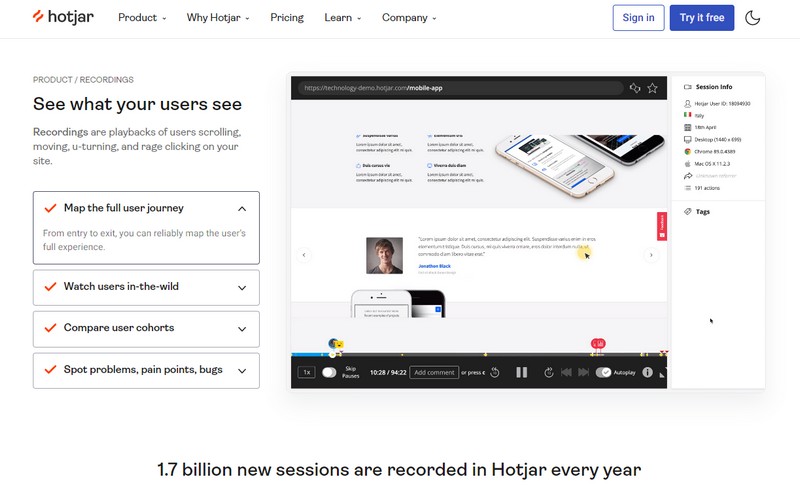
Of particular interest are these session records of visitors who opened several pages in your store but then decided not to place an order.
A/B Testing
From the data and evaluations of the web analytics and session recordings you now have clues. For example, the contact form is too small or the shipping costs information cannot be found. These are the first assumptions that you now need to validate in order to increase the Magento conversion rate.
A/B testing allows you to test your assumptions. You do this by using two different versions of a page. 50% of the visitors see version A and 50% of the visitors see version B. You determine how long you want to run the test.
Again, the more visitors you have in your store, the faster you will have your results.
Some software solutions even allow you to run A/B/C tests, so you can directly test multiple versions and assumptions.
To learn in this process and document what you learn, it’s best to keep a record. For example, take screenshots of your versions and document assumptions and conclusions.
This way you can increase your Magento conversion rate in a structured way.
Marketing Automation
With marketing automation software, it is possible to automate parts of your marketing processes. I go into this in detail in the Hub E-Commerce Marketing Automation.
Conclusion
Magento Conversion Rate Increase – Summary & Conclusion
You have many options to optimize your Magento store for higher conversion rates. Always try to implement only one change and measure it. Only through measurement and logging, you can really improve your store.
- Order without registration
- Coupon code field is easily visible
- Visualize urgency and scarcity
- Product Description
- Optimize Product Images
- Image Gallery on Smartphone
- Uniform Images / Preview Sizes
- Use Filter Navigation
- Bestsellers to the Top
- Reduce the Number of Pages per Category
- FAQs
- Guidebook
- Technical Details, Tests, Unboxing
- Calculators and Configurators
- More Content that makes stores more “linkable
Conversion Rate Optimization for Magento Shops via Extensions / Extenders
- Better Sorting Functions
- Product Labels
Magneto Conversion Rate Optimization Tools
- Web-Analytics
- Feedback and Session Recording
- A/B Testing
- Marketing Automation
CRO Hub Overview
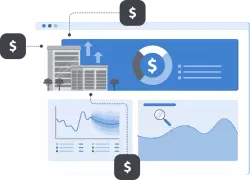
Increase Conversion Rate:
Sales Psychology and Your Conversion Rate
German CRO Database
Conversion Rate Optimization & Consulting

Magento CRO:

